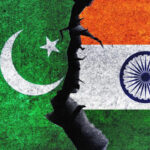Official of Central Tibetan Authority says China pushing more Tibetans to borders
With growing concerns in New Delhi about China’s transgressions at the Line of Actual Control and reports of the settlement of villages along it, the leadership of the Tibetan community in exile says it is concerned that China might be “pushing” more Tibetans out to the border areas while using the opportunity to settle more mainland Chinese in Tibetan cities.
In addition, according to Penpa Tsering, the newly elected “Sikyong” of the “Central Tibetan Authority (CTA) based in Dharamshala, there is also a need for a strategy to ensure livelihoods for Tibetans living in India especially in remote and border States.
“We hope to send a Representation to the Indian government on the overall situation of Tibetans in India, and challenges we face today,” Mr. Tsering told journalists during a visit to Delhi that comes after a detailed tour by him to outlying areas in Ladakh.
“We want to ask how India can help us sustain our community, especially those settled in Arunachal, Tawang, in Uttarakhand and in Ladakh. We definitely need more steps — a strategy — a firm policy and the means to cater to the needs of people in the border areas,” he added. Mr. Tsering declined to comment on the current tensions between India and China at the LAC, but said the border aggressions by China denote an “insecurity” within the Chinese government.
Mr. Tsering said the CTA, the self-styled Tibetan “Government in Exile”, would also like assistance in completing an authoritative census of the Tibetan diaspora worldwide, so as to be able to better care for their needs. According to informal estimates, he said India houses about 75,000 live in India, 10,000 in Nepal. The U.S., which has been steadily accepting more Tibetans in the last few years, has approximately 25,000, while Canada is home to about 10,000, and about 20,000 are based in European countries.
When asked, Mr. Tsering said the number of those leaving Tibet has steadily decreased in the past decade, in part due to strict restrictions at the China-Nepal border, and those arriving in India are now down to a small trickle. According to the CTA officials present, about 20,000 Tibetans were enrolled in schools run by the CTA in India and Nepal, which has halved in the past decade to about 9,700.
Of particular concern, he told journalists, is that those inside the Tibetan Autonomous Region (TAR) are “losing their culture” as school going children are mandated to learn Mandarin Chinese over Tibetan and find employment difficult unless they are schooled in Chinese.
“Under Xi Jinping, Chinese authorities are less accommodative of different cultures and languages: they promote ‘One nation, one party, one language, one culture’ now,” he said, adding that as a result it was even more important for the CTA to promote Tibetan ethnic culture through the diaspora.
Talks between the Dalai Lama’s representatives and the Chinese government have not taken place since 2011, after which President Xi Jinping came to office with a tougher line on Tibet.
Mr. Tsering said while the Dalai Lama and the CTA are open to talks with China, they should be official, not “semi-official” and that he is in the process of structuring a “Permanent Strategy” committee to deal with the question of talks.
The CTA is not recognised by any country at present, although many countries support and fund their activities and assist Tibetan refugee communities worldwide.
In a statement earlier this month, Chinese foreign ministry spokesperson Wang Wenbin called the government-in-exile an “out and out separatist political group”.
“It is against China’s constitution and laws; it is an illegal organisation. No country in the world recognises it,” Mr. Wang said during the press briefing held on November 11.
India urged to spell out policy on Tibetan exiles
Official of Central Tibetan Authority says China pushing more Tibetans to borders
With growing concerns in New Delhi about China’s transgressions at the Line of Actual Control and reports of the settlement of villages along it, the leadership of the Tibetan community in exile says it is concerned that China might be “pushing” more Tibetans out to the border areas while using the opportunity to settle more mainland Chinese in Tibetan cities.
In addition, according to Penpa Tsering, the newly elected “Sikyong” of the “Central Tibetan Authority (CTA) based in Dharamshala, there is also a need for a strategy to ensure livelihoods for Tibetans living in India especially in remote and border States.
“We hope to send a Representation to the Indian government on the overall situation of Tibetans in India, and challenges we face today,” Mr. Tsering told journalists during a visit to Delhi that comes after a detailed tour by him to outlying areas in Ladakh.
“We want to ask how India can help us sustain our community, especially those settled in Arunachal, Tawang, in Uttarakhand and in Ladakh. We definitely need more steps — a strategy — a firm policy and the means to cater to the needs of people in the border areas,” he added. Mr. Tsering declined to comment on the current tensions between India and China at the LAC, but said the border aggressions by China denote an “insecurity” within the Chinese government.
Mr. Tsering said the CTA, the self-styled Tibetan “Government in Exile”, would also like assistance in completing an authoritative census of the Tibetan diaspora worldwide, so as to be able to better care for their needs. According to informal estimates, he said India houses about 75,000 live in India, 10,000 in Nepal. The U.S., which has been steadily accepting more Tibetans in the last few years, has approximately 25,000, while Canada is home to about 10,000, and about 20,000 are based in European countries.
When asked, Mr. Tsering said the number of those leaving Tibet has steadily decreased in the past decade, in part due to strict restrictions at the China-Nepal border, and those arriving in India are now down to a small trickle. According to the CTA officials present, about 20,000 Tibetans were enrolled in schools run by the CTA in India and Nepal, which has halved in the past decade to about 9,700.
Of particular concern, he told journalists, is that those inside the Tibetan Autonomous Region (TAR) are “losing their culture” as school going children are mandated to learn Mandarin Chinese over Tibetan and find employment difficult unless they are schooled in Chinese.
“Under Xi Jinping, Chinese authorities are less accommodative of different cultures and languages: they promote ‘One nation, one party, one language, one culture’ now,” he said, adding that as a result it was even more important for the CTA to promote Tibetan ethnic culture through the diaspora.
Talks between the Dalai Lama’s representatives and the Chinese government have not taken place since 2011, after which President Xi Jinping came to office with a tougher line on Tibet.
Mr. Tsering said while the Dalai Lama and the CTA are open to talks with China, they should be official, not “semi-official” and that he is in the process of structuring a “Permanent Strategy” committee to deal with the question of talks.
The CTA is not recognised by any country at present, although many countries support and fund their activities and assist Tibetan refugee communities worldwide.
In a statement earlier this month, Chinese foreign ministry spokesperson Wang Wenbin called the government-in-exile an “out and out separatist political group”.
“It is against China’s constitution and laws; it is an illegal organisation. No country in the world recognises it,” Mr. Wang said during the press briefing held on November 11.






NO COMMENT